Media | Articles
Want to Buy a General Motors Futurliner? Got a Cool Million?

General Motors history buffs, art-deco enthusiasts, and retro-futurists have a rare opportunity. The Peter Pan Bus Lines is selling the restored General Motors “Parade of Progress” Futurliner that it has used as a promotional vehicle for the past 25 years or so. Interestingly, instead of selling the vehicle at auction, which would likely generate a ton of publicity, Peter Pan quietly listed its Futurliner on Facebook Marketplace with an asking price of just under one million dollars.
Here’s the listing:
Only one of 12 built. Extremely rare opportunity to own one of the most famous vehicles ever built by GM. This vehicle was restored in the late 1990’s. It is retrofitted with a Detroit Diesel 4-71 and Allison automatic transmission. Original gas engine and transmission are included in the sale. It is not perfect, but darn close! Runs and drives down the highway very well at 50+ mph. Light bar works. Sides open & close. Steering was upgraded with power assist. This vehicle is used regularly for shows and events. This is believed to be “#7” of the 12 built by GM for the famous “Parade of Progress”. Please do not waste my time – NO trades, NO ridiculous offers – the price is $998,900.00.
This particular Futurliner was found in a decrepit state in a corn field in upstate New York. Peter Pan, one of the largest motorcoach charter companies in the U.S., bought it and commissioned Coach Builders of Springfield, Massachusetts, to perform a complete restoration. That restoration was originally done in green, the colors of Peter Pan, but the Futurliner has since been resprayed in its original red.

The story of the Futurliner goes back to the 1933 Century of Progress world’s fair in Chicago. Charles Kettering, the inventor of the first practical electric self-starter for automobiles and GM’s VP in charge of research, was walking through the company’s pavilion, full of displays promoting GM’s progress in science and technology. Kettering thought it would be a good idea to take some of those displays on the road to towns and cities across the country.
Kettering pitched his idea to GM chair Alfred Sloan Jr. and Paul Garrett, VP for public relations. Circumstances boded well: The country was in the grips of its worst economic depression and people were looking for cheap entertainment. Putting the show on the road, taking it to smaller cities and towns, and charging no admission meant people would come from miles around to see it. This was before televisions were ubiquitous, when radio and newspapers were the major means of mass communication. If people wanted to see a certain show, they had few options but to attend in person. Sloan and Garrett embraced his idea.
Marketplace
Buy and sell classics with confidence

To move the show from town to town, GM allocated nine Chevy and GMC tractor-trailers and had a fleet of eight custom vans built by Fisher Body’s Fleetwood plant, where Cadillac limousines were built. The vans were streamlined, in the current style, and painted an attention-grabbing combination of red and white.

The fleet was staffed by three to four dozen young men, all graduates from leading colleges and universities. They would drive the vehicles to the venues, set up the trailers and buses as walk-through displays, and then put on nicer uniforms to give lectures and presentations on the various exhibits and to present a live 45-minute show in the circus tent they had erected.

The entire show was planned a year in advance. When GM picked a city or town, Garrett’s PR staff would contact the local chamber of commerce and city officials, and a short while later an advance man would arrive to find space to pitch the tents, make arrangements for lodging, and promote the event to radio stations and newspapers, along with schools, fraternal organizations, civic groups, and of course, GM dealers. They also distributed a short film of the actual shows to local movie theaters.
The first Parade of Progress was in 1936. The route started in Lakeland, Florida, and ended at Pearl Harbor, Hawaii, visiting a remarkable 251 towns and cities. The Parade was international too, with stops in Mexico and Cuba. Twelve and half million people saw the Parade its first year, 3.5 million more than went to Major League Baseball games that year. There would be three Parades of Progress, the last in 1956.

By 1940, the Parade had proven so successful that GM had to construct a bigger tent to hold the crowds. The original eight vans were replaced by 12 completely new and custom vehicles that GM named “Futurliners,” plus a display shaped like one of the buses that had an animated diorama called Our American Crossroads that showed how 20th-century America developed along with the automobile.

The vehicle currently up for sale is one of those Futurliners. The design, attributed to Harley Earl, has unique styling, to say the least. It’s tall and narrow, almost 12 feet tall and just 8 feet wide. It weighs about 16.5 tons and stretches 33 feet from tip to tail, with a 248-inch (20.6-foot) wheelbase. For some reason, dual tires were specified up front, each wheel with its own brake drum. Getting four tires to change direction wasn’t easy, so GM installed an early iteration of power steering, which frequently failed due to the load. The six brake drums on the Futurliner were also not quite up to snuff, and one of the parades experienced a rear-end collision between two of the buses. As you can see from the photos taken of another restored Futurliner, number 10, the acrophobic driving position likely took some getting used to.

The Futurliners were originally powered by four-cylinder diesel engines mounted in front under the cab, driving through a 16-speed (four-speed, four-range) manual gearbox. In 1953 GM made both mechanical and cosmetic revisions. The clear plastic dome over the cab was like a greenhouse, making the drivers uncomfortably warm, so it was replaced by a more traditional roof, with a sunroof/hatch. The cabin also gained A/C from GM’s Frigidaire division. The engines were upgraded to 302-cubic-inch six-cylinder diesels from GMS. The transmissions were replaced with four-speed Hydramatic units coupled to another two-speed gearbox and a third three-speed power-take-off unit for a total of 24 ratios. With just 145 hp on tap and a quarter mile time of 41 seconds (trap speed: 28 mph), the Futurliners needed all those gears to get to all those towns.

The actual Futurliners had clamshell sides that opened up to reveal the displays inside. Lightbars rose hydraulically from the roofs to illuminate the Parade of Progress at night.
Barely a year after they were revealed, in the second half of December, 1941, the buses were put into storage: Japan had just attacked Pearl Harbor. The Parade of Progress was brought back in 1953, likely to complement GM’s new Motorama shows, which were staged in major cities and focused more directly on selling cars. While new car models were on display in the Parade of Progress, they were more of a sideshow to the displays on the Futurliners.

An attendee at the first Parade of Progress in 1936 would likely have been astounded at the 1953 show, with displays about jet airplanes, stereophonic high-fidelity sound systems, microwave ovens, and atomic power. However, as television sets became more popular through the ’50s, increasing numbers of people realized could find out about those fascinating new technologies without having to leave home or contend with crowds. Attendance started to decline, and the Parade of Progress ended in 1956.
One Futurliner was destroyed in a wreck in 1956. Of the remaining eleven, nine are known to exist in states ranging from disrepair to full restorations. Seven have either been restored or are considered restorable. The two basketcases have been used to restore other Futurliners. As of ten years ago, one bus was being restored in Sweden. Another, considered to be the most original, was being restored in Utah. That bus has been the template for other restorations. The remains of Futurliner #5, which has donated parts to other restorations, have been converted into a rather clever flatbed car and truck hauler.
In addition to the photos listed by Peter Pan on Facebook Marketplace, I’ve included some photos of Futurliner #10 so you can see what the original instrument panel looks like (the Peter Pan bus has an updated dashboard), as well as some video of it actually being driven.
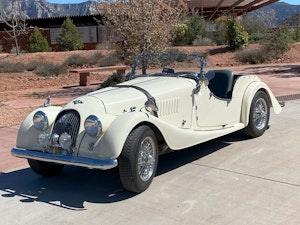
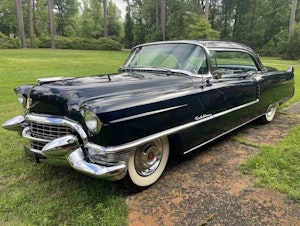

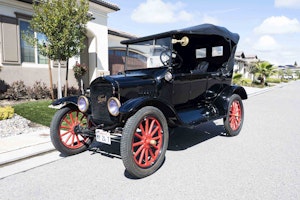
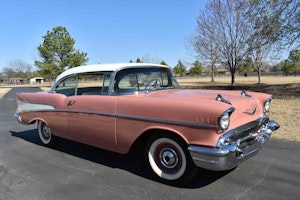

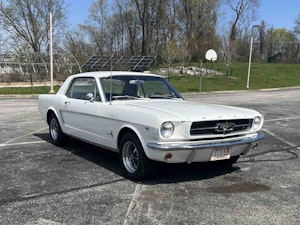
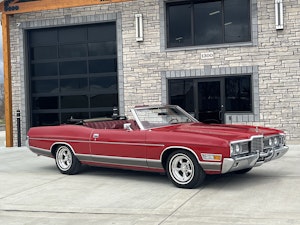










































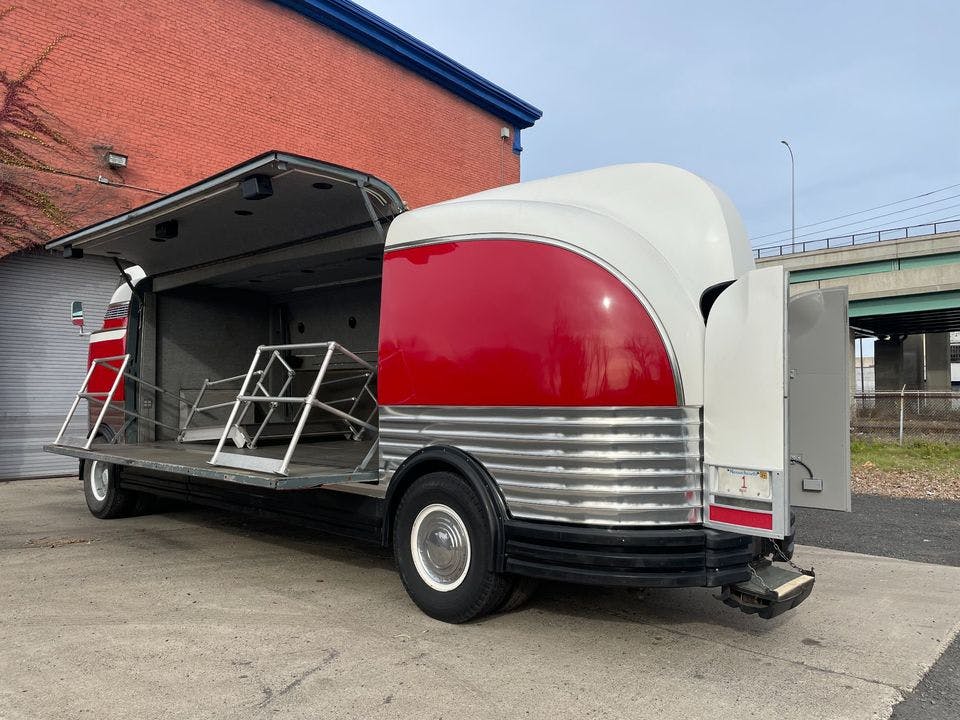



















Sad to see this on the market as I’ve seen it on numerous occasions in the Western Massachusetts area – at all sorts of events. Always felt it must be a bear to drive anywhere – at any speed.
Although $1M is a bit out of my price range, it’s certainly priced well below the cool $4 Million a fully-restored Futurliner sold for at auction a few years ago….
Oh boy. The business side made the USA so optimistic. Does anyone remember that GM convinced and encouraged city’s and towns to rip up Trolley tracks and stack up the trolleys and burn them for entertainment. Then in a few years they sold buses to those cities to replace the trolleys.
Those things are so cool to look at. Good luck to the next owner.
There is one of these at the truck and transportation museum (I forget the actual name) co-located with the ACD – (Auburn/Cord/Duesenberg) Museum in Auburn, IN. We were there in late September and into early October of 2022. When we were approaching the museum parking lot, we saw the coach returning to the facility as it had been in a parade earlier that day. After 1/2 day of touring the ACD, had been there the whole day before, we adjourned to the truck museum. After another 1/2 day of looking at vehicles and as we were working our way toward the exit, they were backing it in into the building. That in itself was an impressive exercise.
While we were watching the video on the history of the coaches and another on the restoration of that particular unit, they were finishing cleaning it up and prepping it for display. You don’t really get to go into it, and there doesn’t appear much to see inside, think of looking into the empty back of a giant box van. It is an impressive vehicle though. And it is an interesting insight into earlier educational efforts.
I got to c one at the AACA national show in Melbourne, Florida about 10 + years ago. Amazing! I saw it way off in the distance and went WOW, I knew exactly what it was. I had no idea it was going to be there. And I got to climb up the stairs and sit behind the wheel. Amazing vehicle, but would I but it for a million $, NO!
I personally met Dave Kindig at a car show in Ohio a few years back and we discussed the futureliner that they had restored. He offered to sell it to me for $1.25 million. Sounds like a bargain compared to this one for sale.
Ron Pratte bought a Futureliner at Barrett Jackson auction for 4 million
I saw this vehicle a couple times at The Big E, New England’s state(s) fair. Impressive for sure.
The statement about television not being “ubiquitous” in 1933 is a gigantic understatement. There were far more articles about the “perfection of television” in the early ’30s than actual television sets, and they were mostly mechanical! US broadcast TV didn’t get started until about 1939 (the BBC was on the air in the UK with TV in 1936), and by 1941 it’s estimated that there were well under 5000 receivers ever made.
Memories, memories!! Back in the ’50s somewhere, the Parade of Progress made its way into Corvallis Oregon, and set up in the Gill Coliseum parking lot that was a few houses from my parents’ house. It was quite a quality show that they presented, and definitely made an impression on me, a 10 or 11 year old kid. I was really impressed by the Futurliners! Many years later, I “stumbled” upon an article on the history of the Futurliners, and was disappointed that they had poor brakes. At the time I thought that GM was pretty much top notch engineering and quality, and that info caused a lot of consternation in my mind about them.
Am I the only one who noticed the “Framistat” in the electrical box?
The GM Parade of Progress visited Norfork Virginia either in 1953 or 54…remember seeing the original Nomad (half C1 Corvette, half 55 “real” Nomad), the Le Sabre and a real Corvette among other cool exhibits. I was 8 at the time and it whetted my appetite for things automotive…only 8 more years till my driver’s license!
Would be nice to see them all restored to original condition from the last parade.
I’m not a GM guy, but I appreciate their effort and time to do what they did from the start in the 30’s and to then continue on with a new fleet in the 50’s.
I was about to go into a rant… but this isn’t the time or the place for it.
I was in my opinion very fortunate to see one of these Futurliners at a “Back to the 50’s” car show in Minnesota several years ago and they are no doubt technologically wonders of the time and very interesting to say the least.
These days I seem to be more interested in the better simpler times of the past.
Thank you Hagerty …
Too cool! Saw these in an SIA article four-five decades ago, tho. My desire was to win one of the Ralston-Purina ‘Tom Corbett Space Patrol’ rocket ship rigs, offered in the mid-fifties. I remember telling dad I was entering their contest (Rice Chex/Wheat Chex) and if I won the rocket (on a semi-trailer) then he could have the super-cool White 3000 tilt-cab tractor for a neato job driving trucks! Being an asst. Supt. of Co. Schools at the time, he just raised his eybrows a bit… gee, son, a real job! I guess some kid won those — !
BTW, the public schools are everyone’s whipping boy, but they did not let America down, nor demonize the sacred capitalist system, as noted above; it did that to itself! Don’t get me started, lady! Wick; age 79
There was one at a car show in to y Roanoke, Indiana, a couple years ago. Don’t remember which number it was but I did climb up into the cab to check it out. It would not be fun to drive. It had a Detroit 4-71 in it with a 4-speed trans.
This looks like the unit that was in the Artmobilia Car Show in Carmel IN last September, and was owned/curated by the NATM in Auburn IN. We could climb inside the cab, which was really small. Seated 3 people including driver who sits in middle. The transmission shifter on floor left and big ole wheel. You climb three/four steps to get to the cabin where passengers sit. It’s really cool… but not a daily driver. LOL